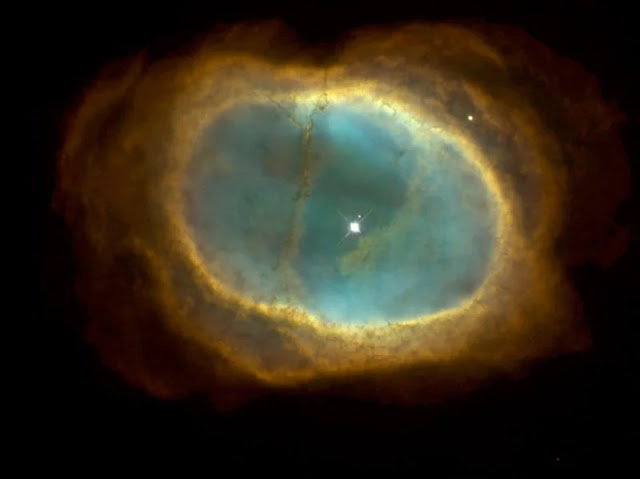NASA will unveil the first images and data from the new James Webb Space Telescope on Tuesday morning.
This will conclude 30 years and $10 billion worth of planning, construction, testing, and innovation, followed by six months of fear, anxiety, and anticipation.
The images depict a journey of the cosmos in colors that the human eye has never seen – the invisible rays of infrared or heat radiation. Since the atmosphere blocks infrared photons, they can only be investigated in space. They may, among other things, pierce the dust clouds that cage the cosmic nurseries where stars are created, transforming them into transparent bubbles that reveal the newborn stars inside.
Tuesday at 10:30 a.m. Eastern, NASA will broadcast live footage of the images. You may sign up for a reminder on your own digital calendar in order to see them first.
Only a tiny fraction of the world's astronomers have seen the images captured by the Webb. Late in June, NASA officials who were provided early access to the new photographs could only gush during a press briefing.
Webb is the biggest telescope ever launched into orbit. Its objective is to examine the earliest days of the cosmos, when galaxies and stars were barely forming out of the Big Bang's obscuring haze, extending farther back in time and space than the Hubble Space Telescope.
NASA anticipates that the Webb will define astronomy for a new generation of scientists who have been anxiously awaiting their own encounter with the universe, much as the Hubble has done for the previous three decades.
The images that will be released on Tuesday were hand-picked by a small team of astronomers and scientific outreach specialists to demonstrate the capabilities of the new telescope and stun the public. They will be displayed in Greenbelt, Maryland, at the Goddard Space Flight Center.
The publication of the photographs will be followed by a scientific symposium and a rush of professional astronomers to their computers to begin collecting and analyzing data from their own June-begun scientific investigations.
5 Targets of James Webb Space Telescope:
1) Carina Nebula
The Carina Nebula is one of the biggest and brightest nebulae seen in the night sky, according to NASA. It is situated around 7,600 light-years distant in the southern Carina constellation. The Carina Nebula contains several enormous stars that are several times the size of the Sun.
The image above was acquired by Hubble in 2010 and depicts the "mystic mountain," a three-light-year-tall cosmic pinnacle inside the Carina Nebula that is composed mostly of dust and gas and indicates evidence of strong star formation. These hues correspond to the luminescence of oxygen (blue), hydrogen and nitrogen (green), and sulphur (red).
2) WASP-96 b
NASA reports that WASP-96 b, a huge planet beyond the solar system of Earth, is comprised mostly of gas. Nearly 1,150 light-years distant, the planet circles its star every 3.4 days. It has around half the mass of Jupiter and was discovered in 2014.
WASP-96 b cannot be seen from the Earth.
3) Ring Nebula of the South
The Southern Ring Nebula, also known as the Eight-Burst Nebula, is a planetary nebula, which is an expanding gas cloud encircling a dead star. It has a diameter of roughly half a light-year and is around 2,000 light-years from Earth.
It is visible from the southern hemisphere of Earth and has a form described by NASA as a figure eight when seen through telescopes. In 2008, Hubble took the above image.
4) The Stephan Quartet
Stephan's Quintet, commonly known as Hickson Compact Group 92, is situated in the constellation Pegasus and was discovered in 1787. It is located around 290 million light-years distant, and NASA characterizes four of its five galaxies as being involved in a cosmic dance of frequent near encounters.
Studies have indicated that one of the members of the "quintet," NGC 7320, which can be seen in the upper left, is really a foreground galaxy about seven times closer to Earth than the rest of the group.
In 2009, the above image of Stephan's Quintet was captured by Hubble's Wide Field Camera 3.
5) SMACS 0723
This celestial target is described by NASA as a collection of massive foreground galaxies that magnify and distort the light of objects behind them. This phenomenon, known as gravitational lensing, enables telescopes to obtain a deeper field view of the extremely distant and therefore faint galaxy populations.
Based on observations made by the RELICS Treasury Program (GO 14096) using the NASA/ESA HST, which is administered by the Association of Universities for Research in Astronomy, Inc., under NASA contract NAS5-26555, this study was produced.
It is unclear if Webb will picture this cluster or use it to view even farther away.
The James Webb Space Telescope will deliver photos on July 12 that include the deepest perspective of the cosmos ever captured.





